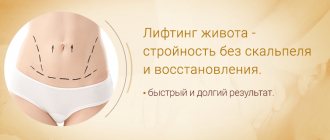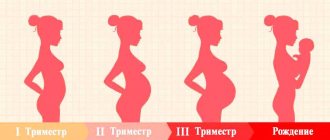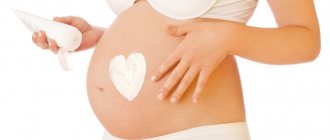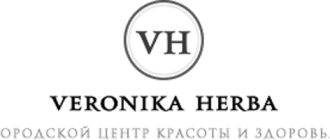Treatment of hair loss after childbirth
During pregnancy, most women note that their hair becomes thicker, stronger and healthier, grows much longer than before, and practically stops falling out. This fact is associated with hormonal changes in the body during pregnancy and an extension of the hair growth phase.
However, after childbirth, usually at 3-5 months, there is a sharp onset of hair loss, sometimes leading young mothers to panic. Hair falls out in clumps. In order to prevent hair loss, women sometimes stop combing and washing their hair, but this does not bring results.
During this period, a woman can lose 20-40% of her hair. This behavior of hair is associated with a sharp one-time transition of all hair that did not fall out during pregnancy into the telogen phase (loss). Despite the scale of hair loss, this process is temporary, and the hair will be restored completely or almost completely, so young mothers just need to get through such a difficult period.
To smooth out the severity of hair loss, strengthen the roots, and also stimulate the growth of new ones, excellent results are achieved by procedures such as mesotherapy and plasma lifting of the scalp. Don't forget about vitamins, microelements, as well as medicated shampoos and lotions. Complex treatment is always more effective.
A little about the regime after cesarean section
Have your relatives told you the following: “You need to move more, don’t sit at home, go out for a walk!”? Or vice versa: “Lie in bed, don’t move, let everything heal?” It is interesting that the opinions of “experienced” relatives about what regimen a mother should adhere to after a cesarean section can be diametrically opposed. Who should you listen to? Of course, the doctor observing you.
After all, no matter how much advice you hear about the regime and workload of a woman who has undergone a cesarean section, no matter how much you read about it in the blogs of successful mothers and social network groups, only the doctor who performed the operation knows the peculiarities of its progress in this particular woman, and therefore and can give the only competent advice. When, what and how intense physical activity should be for his patient, the doctor will determine, focusing on the characteristics of the woman’s initial health condition, the course of pregnancy, the type and progress of the operation and the presence of complications. Therefore, it is necessary to talk about the mode and intensity of physical activity only with a doctor before discharge from the maternity hospital and an obstetrician-gynecologist at the antenatal clinic.
You can find many stories on the forums about how mothers “jump” just two hours after a cesarean section, and go out for walks with the baby almost every other day, but the fact remains: we are all different, and only a specialist can determine for whom which mode is suitable? And the postpartum period is not the time to experiment with your own health.
Checklist: what recommendations should a doctor give after a caesarean section?
After being discharged from the hospital, a woman should ask the doctor the following questions:
- how to care for the seam, how to process it and how to close it;
- when can you start showering?
- do I need to wear a bandage?
- when to show the stitch to the doctor.
In what cases should you urgently consult a doctor?
What signs should alert you and give rise to immediate consultation with a doctor?
- itching;
- seam seal;
- pain;
- discharge from the seam;
- bleeding in the suture area
Advice:
If you notice any of the following symptoms, consult your healthcare professional immediately!
And any other phenomena that bother you.
Weight loss and figure restoration after childbirth
Pregnancy is often a risk factor for weight gain for women, which is associated both with hormonal changes in the body and with overeating and decreased physical activity. Some people manage to lose weight almost immediately after giving birth, but most young mothers face problems with excess weight after childbirth and during lactation. Normally, weight should be restored within 6-10 months after birth, subject to diet and healthy lifestyle.
If the weight continues to increase even after the end of lactation, then you should definitely contact an endocrinologist. Do not forget that pregnancy can serve as a trigger for the onset of many endocrine diseases that lead to weight gain. First of all, you should pay attention to thyroid hormones, sex hormones and adrenal hormones. Let us separately recall the increased risk of diabetes mellitus after childbirth, especially against the background of gestational diabetes.
Suture after caesarean section: we monitor and care for it correctly
Postoperative sutures after cesarean section must be treated with great attention, since problems in this area can lead to serious complications. In the public domain you can find a lot of tips and recommendations on how to care for a postoperative suture, what to do to make it scar faster, what regimen to follow, and even how to treat inflammation in the suture area.
However, experts say: following these rather general tips is dangerous! In each case, a strictly individual approach is required, and one piece of advice may be appropriate for one woman, but completely unacceptable for another.
For example, even harmless advice to treat a postoperative suture with brilliant green in the case of certain problems may be contraindicated due to the risk of missing the beginning of inflammation. Therefore, before leaving the maternity hospital, every woman should ask her doctor in detail the following questions: how to care for the suture, how to treat it, how to close it, when you can start showering again, whether you need to wear a bandage, when to show the suture to the doctor. It is equally important to find out from a specialist what signs should alert you and serve as a reason for immediate consultation with a doctor (itching, thickening of the suture, pain, discharge from the suture, bleeding in the suture area, etc.).
In the future, all recommendations for caring for the suture will be given to the woman by the obstetrician-gynecologist at the antenatal clinic.
When to start procedures to restore your figure after childbirth?
It is most rational to begin procedures at the end of the lactation period after complete restoration of hormonal levels. During breastfeeding, procedures such as manual or hardware massage are recommended, aimed at a tonic and lymphatic drainage effect. Active lipolytic procedures such as mesotherapy, acupuncture, ultrasonic liposuction and others are contraindicated during lactation. You should also be careful about wraps during breastfeeding, select and carry them out under the strict supervision of a doctor. The most popular procedure after childbirth is thermolifting of the body, which allows you to tighten the skin after childbirth and also has a pronounced anti-cellulite effect.
Why do women in labor suffer back pain?
Cushions and armchairs for mothers
So, a complete physiological restructuring, preparing the body for childbirth, the process of getting rid of pregnancy, restoration and return of the body to its previous indicators - all these are stresses at the physiological level that a woman experiences for almost one year, while the pregnancy, the birth process and the postpartum period last.
By the way. It is with the restructuring of physiology that pain is associated, especially following labor, which is felt in the lower back. However, their strength cannot but be affected by their lifestyle and the presence of diseases. The second reason is precisely the various pathologies that the mother already has.
Table. Physiological reasons.
| Cause | Characteristics |
| A reason illustrating the softening of ligaments and cartilage under the influence of progesterone. This hormone makes the bones softer so that they can move apart better at the time of birth, releasing the fetus. Because of this, the vertebrae “sag.” Sometimes this happens even during pregnancy, since the body prepares for childbirth almost from the first days. In this case, the nerve endings are pinched, and pain in the lumbar area continues until the cartilage tissue restores its previous structure and the vertebrae fall into place. |
| Another physiological reason is related to the fact that during nine months of pregnancy, a woman’s weight normally increases by an average of 12 kg. Gaining weight causes the muscle tissue in the back and abdomen to stretch, placing increased stress on the spine. The restoration of muscle tone occurs gradually, and along with this the pain goes away. |
| Also physiology, arising as a result of a shift in body weight. Since a woman has to “carry” her expanding belly in front, she leans back more and more, which causes constant tension in the back muscles and pain that persists for some time after childbirth. |
| Changing the location of the bones | In addition to the structure of the bones, their location changes. The bones of the womb and pelvis form a passage for the fetus, moving apart significantly. At the same time, the tailbone begins to move back. To return to their previous position and close together, the bones need some time, during which it is normal to experience pain. |
| When delivery has taken place, the load is redistributed again, and this is done abruptly. The muscles tense up, “getting used to” the new position for them, so the lower back also hurts. |
| As already noted, pain can be caused by diseases or problems with the gastrointestinal tract. Since childbirth often causes constipation until the bowel movement improves, the lower back area at the back may also hurt due to it. |
Advice. Recovery of the female body can occur one month after childbirth, or it can take a couple of months. The joints should return to their place, the ligaments and muscles should return to working condition. It is important not to overstrain your lower back, maintain good posture, and rest.
Treatment of stretch marks after childbirth
Stretch marks are the most common problem that reminds a woman of pregnancy for a long time, usually throughout her life. It has been noticed that young girls under 25 years of age are more susceptible to stretch marks compared to older mothers, and the likelihood of stretch marks appearing during the first pregnancy is much higher than during subsequent ones.
However, today there is a real opportunity to combat stretch marks. Procedures such as mesotherapy, biorevitalization, and thermolifting of the body should be carried out with fresh stretch marks to maximize the reduction of the skin between stretch marks and narrow the stretch marks. Since stretch marks are a type of atrophic scar, they can only be removed using a series of laser resurfacing procedures, the number of which depends primarily not on the length, but on the width of the stretch mark and the healing ability of the skin. Laser resurfacing is possible after the end of the lactation period and complete stabilization of weight.
Stretch marks (striae)
Prevention of stretch marks formation:
There are many opinions and advice on this topic, but you can’t get far from genetics. Therefore, there is no need to succumb to intrusive commercials and buy all kinds of creams, fill yourself with them, sit and wait for a miracle. It is necessary to provide hydration that increases skin elasticity: 3-4 times a day, rub the product into the skin with soft circular movements. Many cosmetic brands develop comprehensive body care specifically for pregnant women, which includes wraps, massages, cosmetic masks - everything that is necessary to improve the quality of a woman’s skin and lift her mood.
If weight gain is intense, the skin receives microtraumas, blood vessels, collagen and elastin fibers are torn, and a “failure” occurs in the skin. And after the appearance of stretch marks , they begin to change color from red to white with pearlescent. You should calm down... And wait for the birth, and then boldly declare war on them!
Correction of stretch marks:
- Mesotherapy (amino acids NCTF135 to improve trophism and/or substances that destroy scar changes for softening).
- A laser for fractional or complete ablation (Acupulse, Fraxel, M22 ResurfFX, X-smart DOT) will remove scars, stretch marks and tighten the abdomen.
- Chemical peels of different depths. But you need to understand that the course will be long.
- At the last stage, some correction of scars may be necessary, which is performed with gels to restore the relief and smoothness of the skin.
Fig. 1. Striae on the abdomen before and after correction.
Restoration of facial skin and treatment of pigmentation after childbirth
After childbirth, young mothers often pay attention to severe dry skin, decreased turgor, and the appearance of fine wrinkles. This is especially evident during lactation, which is associated with hormonal changes and vitamin deficiency. Therefore, the most common procedure after childbirth is biorevitalization with hyaluronic acid, which allows you to heal the skin and restore water balance. It is recommended to start treatment immediately after the end of the lactation period.
The second problem is hyperpigmentation (chloasma, “mask of pregnancy”), which usually occurs in the second trimester of pregnancy. The spots are most often localized on the forehead, around the lips, but can appear on any part of the face. The appearance of such spots is also associated with hormonal changes and increased photosensitivity during pregnancy. In some cases, pigmentation goes away on its own within six months to a year after birth, but in half of the cases it can persist for a long time. The most popular procedure that allows you to quickly and painlessly get rid of age spots is AFT therapy, which can be found in detail in the corresponding section. Treatment can begin already during lactation.
Features of lumbar pain
Episodic non-pathological pain conditions can most often be managed independently, with the help of painkillers. If the pain is seriously bothering you, is not relieved by anabolic steroids, occurs frequently and interferes with normal life activities, you need to go to the doctor, establish a reliable cause and look for pathology. There can be many causes of low back pain syndrome, and not all of them are safe for the overall health of the body.
- It can be caused by a whole group of diseases or pathologies of the spine.
- The syndrome can occur after injury.
Pain after injury - The source is often painful conditions of the gastrointestinal tract and appendicitis in exacerbation.
- Cystitis, urolithiasis and similar kidney diseases also cause pain.
Urolithiasis disease - The cause may be an infection called herpes zoster.
By the way. Any pain is a symptom. Lumbar is no exception. It is necessary to react to it, stop it, finding out why it arose. In order for a symptom to go away, it is necessary to get rid of the condition that gave rise to it.
The state of pregnancy and childbirth is not a pathological, but a natural process. However, it is this that becomes the most common cause of lumbar pain in women.
During pregnancy, the female body undergoes a complete restructuring. Concentrates on the task of bearing and giving birth to a child, adapting his functions and needs to it.
Spine in pregnant women
In this regard, the hormonal background changes, the uterus increases in size, and internal organs shift under its pressure. The skeletal system is adjusted for childbirth, softening and moving apart as much as possible (bones in the pelvis). The condition of the spinal muscles and the entire lower tier of the spine does not remain the same as before pregnancy.
Important! Almost any kind of pain that occurs in the lower back during pregnancy, during the birth process and after it (natural, with the exception of pathological ones), is rather a discomfort than a full-fledged syndrome. Restorative exercises, regimen, and time help to cope with them in most episodes. But some postpartum conditions accompanied by persistent pain require immediate, thorough treatment.
If you have back pain after pregnancy, it is better to consult a doctor for diagnostics.
Intimate recovery after childbirth
Often the most important area that requires special attention for every woman. A detailed article on this topic was covered by my colleague, gynecologist I.V. Shulchina. in the appropriate section.
To summarize what has been said, we will highlight the most popular procedures for recovery after childbirth:
| Problem | Recommended Procedures |
| Hair loss | Mesotherapy for hair |
| Excess weight Body correction | Body thermolifting Anti-cellulite massage Body mesotherapy |
| Stretch marks | Laser treatment for stretch marks |
| Dry skin | Biorevitalization of the face |
| Hyperpigmentation | AFT therapy Phototherapy |
| Problems in the intimate sphere | Intimate recovery after childbirth |
Author of the material: Cosmetologist, dermatologist Lachinova N.M. All rights reserved.
Vascular network
Prevention:
To prevent the formation of vascular networks on the legs during pregnancy, you can use gels, ointments, vitamins (Lioton 1000, Troxevasin, Phlebodia).
Correction of the vascular network:
Treatment of vascular formations consists of removing the vessels with a laser or injecting drugs that “glue” the vessels together (consultation with a doctor is required). All these procedures are tolerable and give immediate results.
| Fig. 6. Vascular network on the legs before and after correction with a neodymium (Nd:YAG) laser. | Fig 7. Vascular network before and after correction (enlarged). |
Masks for a firm belly
Vinegar wraps: take 1 tbsp for 1 glass of water. l. 9% vinegar. Soak gauze in vinegar water, place on the stomach, with cling film on top. Keep it for half an hour.
Yeast mask: 20 g of yeast, 5 tsp. cream, 5 tsp. honey The mask nourishes, tightens pores, stimulates blood circulation and increases elasticity.
Nettle mask: 2 tbsp. spoons of dry nettle, pour 1 glass of water, boil for 10 minutes. Cool, moisten a layer of gauze in the broth and secure with cling film on the stomach. Keep the mask on for about an hour.
( Also Read : Loose Skin: 7 Home Remedies).








